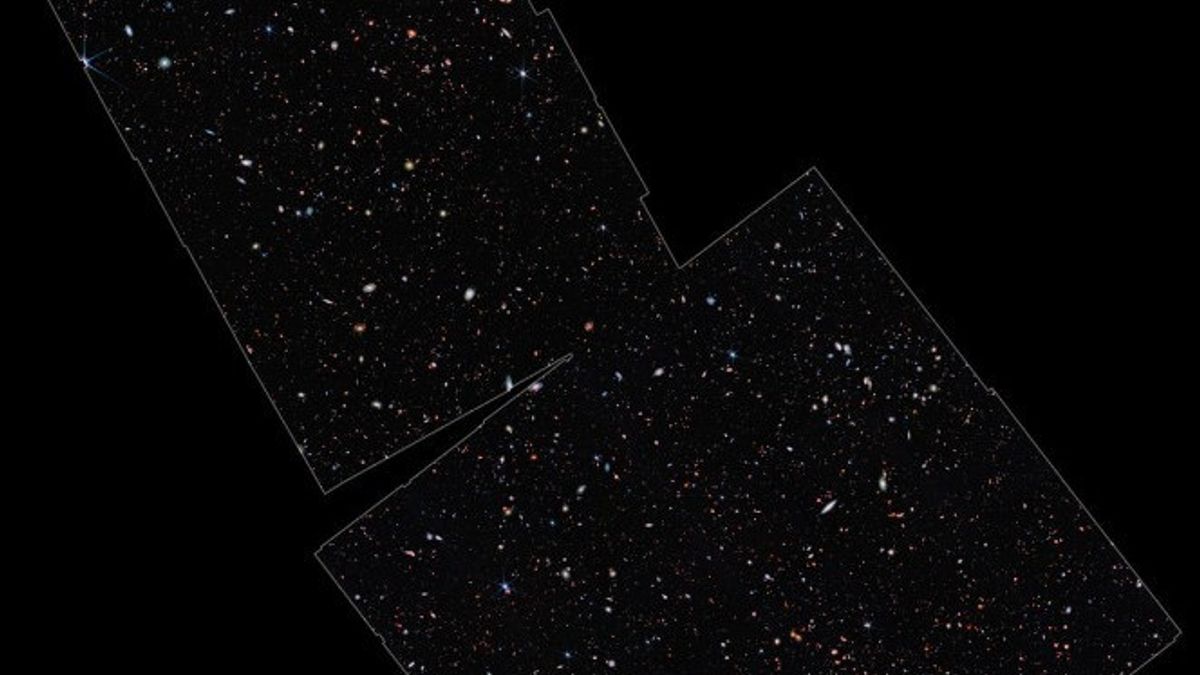JAKARTA - A new study reveals the James Webb Space Telescope (JWST) has discovered several of the oldest galaxies, estimated to be 13.4 billion years old. This discovery came thanks to international astronomers utilizing the data of the giant telescope.
However, NASA says this is preliminary release research, meaning it has not yet been peer reviewed, but there are indications of what type of discovery was made with the Webb Telescope
Astronomers used data from the JWST Advanced Deep Extragalactic Survey (JADES) survey program, an international collaboration that utilizes Webb Telescope instruments to observe the same sky area as previously imaged by Hubble on Ultra Deep Field.
They found that the light from these galaxies took more than 13.4 billion years to reach Earth, as the galaxies were less than 400 million years after the Big Bang.
Previous data from the Webb Telescope show the presence of potential early or equivalent galaxies to the baby and the target has been confirmed by obtaining observations from two instruments on the Webb Telescope, namely Near Infrared Camera (NIRCam) and Near-Infrared Spectrograph (NIRSpec).
The observation was useful for breaking light from early galaxies into different wavelengths. It shows different fingerprints for each galaxy, helping to ensure it is actually an early galaxy, not a nearby galaxy.
The fingerprints are visible in the emitted light from the faint galaxy. The JADES program starts with NIRCam, taking more than 10 days to observe the field in nine different infrared colors, and produces beautiful sky images.
The region is 15 times larger than the deepest infrared image produced by the Hubble Space Telescope, even deeper and sharper at this wavelength.
The image is only the size of a human who appears when viewed from a mile away. However, it was filled with nearly 100,000 galaxies, each caught at a time in its history, billions of years ago.
From these images, galaxies in the early universe can be distinguished from the color aspects of their multi-wavelength waves. Light is stretched in wavelength as the universe expands, and the light from this youngest galaxy has been stretched up to 14 times.
Astronomers are looking for faint galaxies visible in the infrared but their light is suddenly cut off at a critical wavelength, this is due to the expansion of the universe.
Then, the JADES team explored the Webb Telescope image to find this unique candidate using the NIRSpec instrument, for a single observation period covering three days with a total of 28 hours of data collection.
The JADES team collected light from 250 faint galaxies, so astronomers could study patterns imprinted on the spectra of atoms in each galaxy. This yields precise measurements of the redshift of each galaxy and reveals the nature of the gas and stars in the galaxy.
Four of the galaxies studied are very special, as they are revealed to be in an unprecedented early age. The results provide spectroscopic confirmation that the four galaxies lie at redshifts above 10, including two galaxies at redshift 13.
This corresponds to the time when the universe is about 330 million years old, setting new limits in the search for very distant galaxies. The galaxies are very dim because they are very far from Earth.
Launching Fox News, Monday, December 12, next year, JADES will continue a detailed study of other fields, this time centered on the iconic Hubble Deep Field.
The English, Chinese, Japanese, Arabic, and French versions are automatically generated by the AI. So there may still be inaccuracies in translating, please always see Indonesian as our main language. (system supported by DigitalSiber.id)













